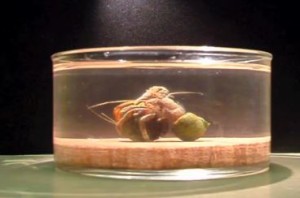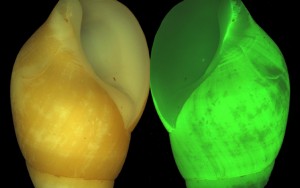For many a man, few things deflate his passion faster than the sight of a woman crying. But tears may do more than visually tell a man it’s not time for romance. A woman’s tears contain substances that reduce men’s sexual arousal, a new study indicates. It’s the first evidence that human tears contain chemical signals.
Tears have largely been considered just a visual signal among people: Studies have shown that people looking at a sad face perceive it as sadder when tears are added. In contrast, some animals seem to use their waterworks to communicate chemically. The tears of male mice, for example, contain a protein that makes females more receptive to mating. But given that people, unlike rodents, don’t preen each other, researchers assumed that we rarely come in close enough contact to perceive chemical cues in tears.
Noam Sobel, a neurobiologist at the Weizmann Institute of Science in Rehovot, Israel, wasn’t convinced. Human tears shed under duress differ chemically from those shed to clear the eye of irritants, and he wondered whether human tears might also carry messages for the opposite sex.
To find out, he recruited two women who claimed they could cry on demand. He showed them a sad film—a scene from Franco Zeffirelli’s 1979 film The Champ, in which a son cries over the body of his dying father, a boxer—and collected their tears in vials (see video). Within minutes, the vials were handed to 24 men, aged 23 to 32, who took 10 deep breaths over the open receptacles. Researchers also stuck a tear-soaked cotton square under each man’s nose for the duration of the experiment. As a control, Sobel and his team did the same with saline solution, which they trickled down the women’s cheeks to account for perfumes and face creams they might have been wearing.
The men were then asked to judge the emotion and attractiveness of images of women’s faces that had been made emotionally ambiguous by morphing together happy and sad faces. The men couldn’t smell the difference between tears and saline, and the tears did not influence how sad they thought the faces seemed. Nevertheless, the men found the women less attractive after smelling the tears, the researchers report online today in Science.
The men’s heart and breathing rates, skin temperature, and testosterone levels also sank, indicating a drop in sexual arousal. Peering into the subjects’ brains using functional magnetic resonance imaging, the researchers found that on average the regions of the brain that usually light up when an individual is aroused, the hypothalamus and fusiform gyrus, responded normally to moderately erotic images. However, this neural activity was dampened when the men were exposed to the tears.
Shedding tears is just another way, along with pheromones and body language, that the sexes can communicate, says Sobel. Women shed tears significantly more often during menstruation, when there is a low chance of conceiving, he notes. “This makes perfect sense because it is signaling that sexual activity is inappropriate from an evolutionary point of view,” says Sobel.
The study’s results expose “a hidden, underlying origin” for tears, says Adam Anderson, a neuroscientist at the University of Toronto in Canada. Tears originally functioned to simply shed irritants from the eyes. They were then co-opted to contain chemosignals and then perhaps further co-opted to express sadness, Anderson says.
But many questions remain, says Kazushige Touhara, a molecular biologist at the University of Tokyo who works on biochemical signaling among mice. The substances that dampen male arousal remain unidentified, and it’s not clear whether the men sensed them with their olfactory system or through their skin. Without knowing such details, says Touhara, it is difficult to know how important tears are as a biochemical signaling route in human interactions.



 LONDON—Plans to build a £500 million medical research institute in the heart of London were approved yesterday by the key local development committee overseeing the location. The U.K. government hopes that the mammoth lab facility, construction of which should begin in the spring, will keep Britain at the forefront of global biomedical research. The approval by the Camden Town Council panel, on an 8-4 vote (with one abstention), came despite scores of registered objections, mostly by local people concerned about the loss of prime real estate previously earmarked for affordable housing.
LONDON—Plans to build a £500 million medical research institute in the heart of London were approved yesterday by the key local development committee overseeing the location. The U.K. government hopes that the mammoth lab facility, construction of which should begin in the spring, will keep Britain at the forefront of global biomedical research. The approval by the Camden Town Council panel, on an 8-4 vote (with one abstention), came despite scores of registered objections, mostly by local people concerned about the loss of prime real estate previously earmarked for affordable housing.
